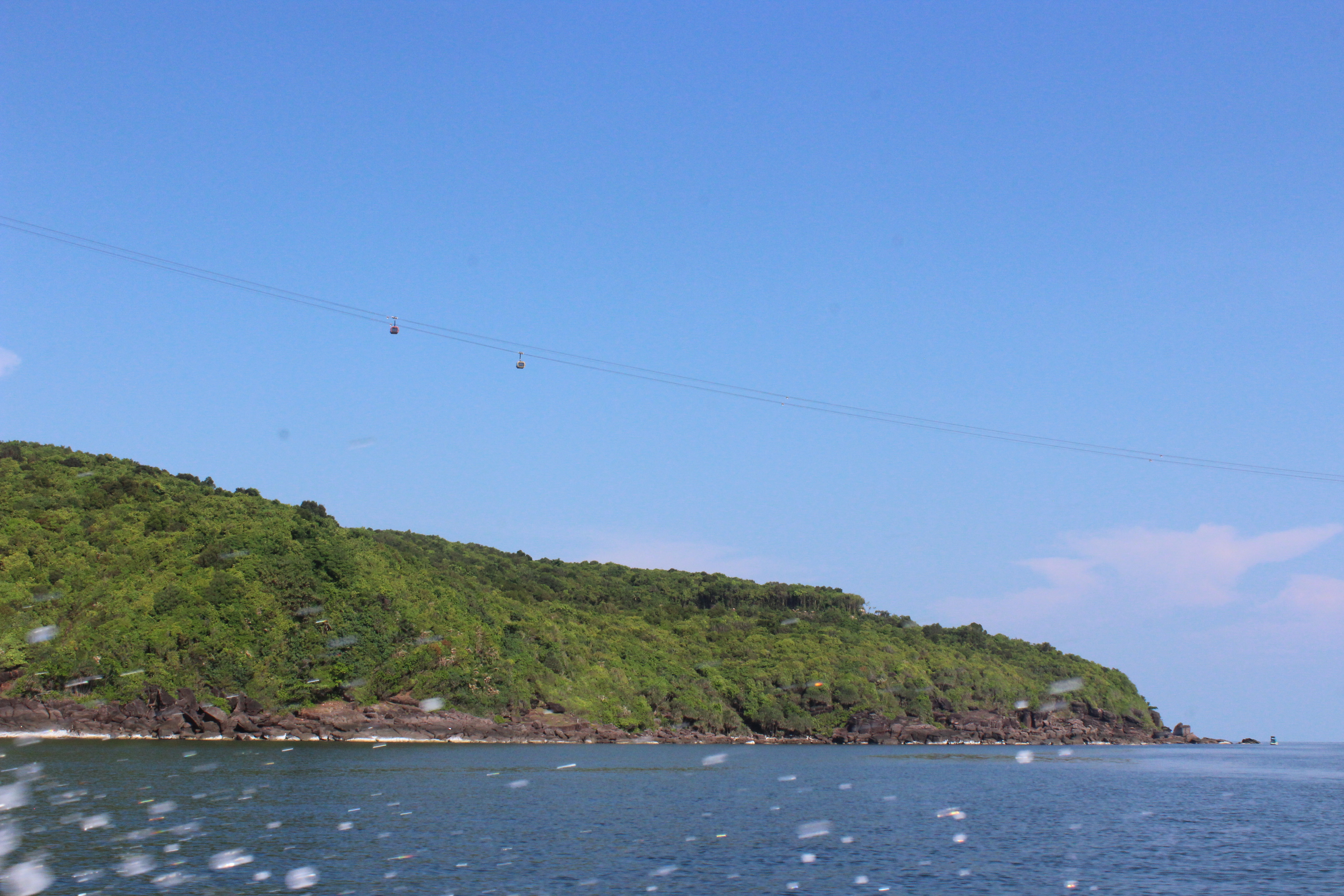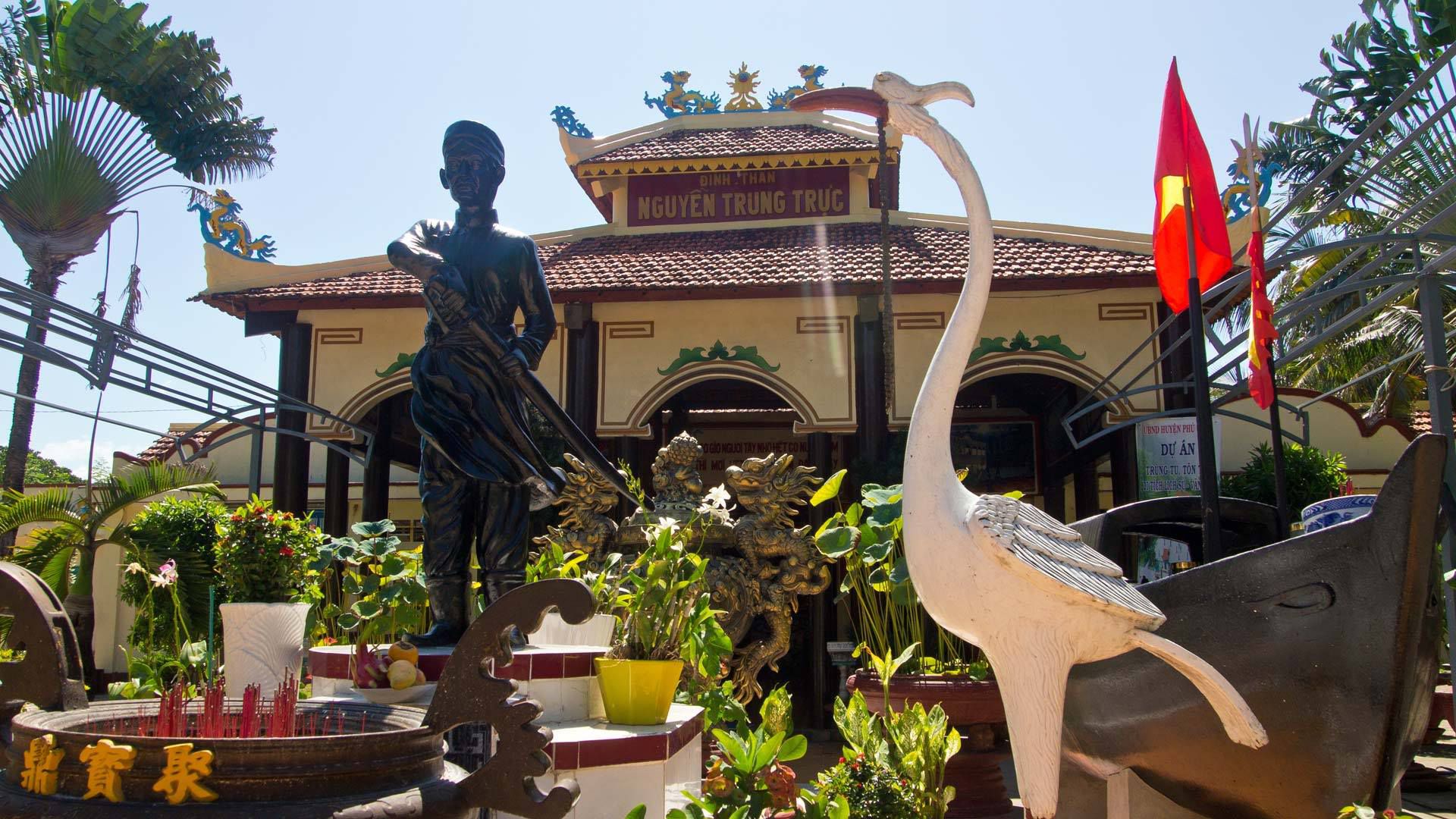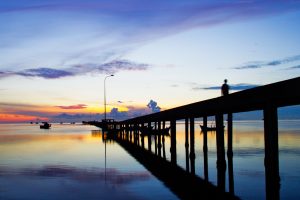Phu Quoc is the largest island in Vietnam. Phu Quoc and nearby islands, along with distant Tho Chu Islands, is part of Kien Giang Province as Phu Quoc District, the island has a total area of 574 square kilometres (222 sq mi) and a permanent population of approximately 103,000. Located in the Gulf of Thailand, the district of Phu Quoc includes the island proper and 21 smaller islets. Duong Dong town, is located on the west coast, and is also the administrative and largest town on the island. The other township is An Thoi on the southern tip of the island.
The economy is centred on fishing, agriculture and a fast-growing tourism sector. Phu Quoc has achieved fast economic growth due to its current tourism boom. Many infrastructure projects have been carried out, including several five-star hotels and resorts. Phu Quoc International Airport is the hub connecting Phu Quoc with mainland Vietnam and other international destinations.
From March 2014, Vietnam allowed all foreign tourists to visit Phu Quoc visa-free for a period of up to 30 days. By 2017, the government of Vietnam planned to set up a Special Administrative Region which covered Phu Quoc Island and peripheral islets and upgrades it to a provincial city with special administration.

Geography
Phu Quoc lies south of the Cambodian coast, west of Kampot, and 40 km west of Ha Tien, the nearest coastal town in Vietnam. Roughly triangular in shape the island is 50 kilometres (31 mi) long from north to south and 25 kilometres (16 mi) from east to west in the north at its widest. It is also located 17 nautical miles from Krong Kampot , 62 nautical miles (115 km; 71 mi) from Rach Gia and nearly 290 nautical miles (540 km; 330 mi) from Laem Chabang, Thailand. A mountainous ridge known as “99 Peaks” runs the length of Phu Quoc, with Chua Mountain being the tallest at 603 metres (1,978 ft).
Phu Quoc Island is mainly composed of sedimentary rocks from the Mesozoic and Cenozoic age, including heterogeneous conglomerate composition, layering thick, quartz pebbles, silica, limestone, rhyolite and felsite. The Mesozoic rocks are classified in Phu Quoc Formation (K pq). The Cenozoic sediments are classified in formations of Long Toan (middle – upper Pleistocene), Long My, (upper Pleistocene), Hau Giang (lower – middle Holocene), upper Holocene sediments, and undivided Quaternary (Q).
Climate
The island’s monsoonal sub-equatorial climate is characterized by distinct rainy (April to November) and dry seasons (December to March). The annual rainfall is high, averaging 3,029 millimetres (9.938 ft). In the northern mountains up to 4,000 millimetres (13 ft) has been recorded. April and May are the hottest months, with temperature reaching 35 °C (95 °F).

Economy
Phu Quoc is famous for its two traditional products: fish sauce and black pepper. The rich fishing grounds off shore provides the anchovy catch from which the prized sauce is made. As widely agreed among the Vietnamese people, the best fish sauce comes from Phu Quoc. The island name is very coveted and abused in the fish sauce industry that local producers have been fighting for the protection of its appellation of origin. Pepper is cultivated everywhere on the island, especially at Ganh Dau and Cua Duong communes. The pearl farming activity began more than 20 years ago when Australian and Japanese experts arrived to develop the industry with advanced technology. Some Vietnamese pearl farms were established at that time including Quoc An.
Tourism plays an important role in the economy, with the beaches being the main attraction. Phu Quoc was served by Phu Quoc Airport with air links to Ho Chi Minh City (Saigon) Tan Son Nhat International Airport, Ha noi (Noi Bai International Airport), Rach Gia (Rach Gia Airport), Can Tho (Can Tho International Airport). Phu Quoc Airport was closed and replaced by the new Phu Quoc International Airport from December 2, 2012. Phu Quoc is also linked with Rach Gia and Hà Tiên by fast ferry hydrofoils.
Air Mekong used to have its headquarters in An Thoi, Phu Quoc.
Many domestic and international projects related to tourism have been carried out, including latest direct flight from Bangkok to Phu Quoc by Bangkok Airways, which could make Phu Quoc a new tourist hub in Southeast Asia.
Vinpearl Phu Quoc Resorts in combination with the opening of the new Vinmec Phu Quoc International Hospital in June 2015, Phu Quoc will add an additional source of revenue to the local economy in terms of medical services, medical tourism, and medical education.

History
The French missionary Pigneau de Behaine used the island as a base during the 1760s and 1780s to shelter Nguyen Anh, who was hunted by the Tay Son army.
An 1856 record mentions the island: “… King Ang Duong (of Cambodia) apprise Mr. de Montigny, French envoy in visit to Bangkok, through the intermediary of Bishop Miche, his intention to yield Phu Quoc to France. Such a proposition aimed to create a military alliance with France to avoid the threat of Vietnam on Cambodia. The proposal did not receive an answer from the French.
While the war between Vietnam, France, and Spain was about to begin (with Cochinchina Campaign), Ang Duong sent another letter, dated November 25, 1856, to Napoleon III to warn him on Cambodian claims on the lower Cochinchina region: the Cambodian king listed provinces and islands, including Koh Trol, as being parts of Vietnam for several years or decades (in the case of Saigon some 200 years according). Ang Duong asked the French emperor to not annex any part of these territories because, as he wrote, despite this relatively long Vietnamese rule, they remained Cambodian lands. In 1867, Phu Quoc’s Vietnamese authorities pledged allegiance to French troops just conquering Ha Tien.
In 1939, the Governor-general of French Indochina, Jules Brévié drew a line to delimit the administrative boundaries for islands in the Gulf of Thailand: those north of the line were placed under Cambodia protectorate; those south of the line were managed by the colony of Cochinchina. Brévié made the point that the decision merely addressed administrative tasks, and that no sovereignty decision had been made. As a result, Phu Quoc remained under Cochinchina administration. Later, Cochinchina’s sovereignty was handed over to the State of Vietnam and remained so after France left.
After Mainland China fell under the control of the Chinese Communist Party in 1949, General Huang Chieh moved 33,000+ Republic of China Army soldiers mostly from Hunan Province to Vietnam and they were interned on Phu Quoc. Later, the army moved to Taiwan in June 1953.
From 1953 to 1975, the island housed South Vietnam’s largest prisoner camp (40,000 in 1973), known as Phu Quoc Prison.
On May 1, 1975, a squad of Khmer Rouge soldiers raided and took Phu Quoc, but Vietnam soon recaptured it. This was to be the first of a series of incursions and counter-incursions that would escalate to the Cambodian–Vietnamese War in 1979. Cambodia dropped its claims to Phu Quoc in 1976. But the bone of contention involving the island between the governments of the two countries continued, as both have an historical claim to it and the surrounding waters. A July 1982 agreement between Vietnam and The People’s Republic of Kampuchea ostensibly settled the dispute, but since Vietnam’s withdrawal from Cambodia, the agreement has not been recognized and the island is still the object of irredentist sentiments. The opposition Cambodian National Rescue Party still claims the island as Cambodian territory.
Source by Wikipedia





